KETAMINE TREATMENT FOR CRPS – CRPS LAWSUITS

Did you develop CRPS after being involved in a personal injury accident? If you are suffering from CRPS, you might have considered the possibility of ketamine treatment for your condition. You should also consider the possibility of taking legal action and pursuing a claim for the harm that you have suffered and will likely continue to suffer because of your CRPS.
If you the accident that led to the development of your CRPS was caused by the negligent actions of a party or entity, you will likely have grounds to pursue a claim. If you would like to learn more about the possibility of pursuing a CRPS claim, do not hesitate to contact the experts at our law firm at your earliest convenience – our experts at Downtown L.A. Law Group are ready to help.
Downtown L.A. Law Group is a personal injury law firm with many years of experience handling all sorts of claims; CRPS claims are among the many claims that we handle. Our experienced attorneys have many years of experience successfully handling these claims, always representing the best interests of our clients. If you would like to discuss the possibility of filing a CRPS claim with the experts at our law firm, do not hesitate to contact our law firm today.
What is CRPS?
Complex Regional Pain Syndrome (CRPS) is a chronic pain condition that affects the limbs and extremities. There are two different types of CRPS (Type I and Type II). CRPS Type I is associated with the pain, swelling, and vasomotor dysfunction of the affected area. This type of CRPS developed in association with a traumatic injury or a surgery. CRPS Type II, although it is associated with the same symptoms, develops strictly because of a nerve injury.
Those suffering from CRPS describe the pain as burning, pins and needles, and even electric shock. What’s most important is that the pain experienced has no real explanation; even if the injury was treated successfully, the patient could feel extreme pain.
CRPS is a disorder of the sympathetic nervous system, which prepares the body for action/stress (what we know as fight or flight). In a healthy individual, the sympathetic nervous system is only activated under acute stress (resulted in pain). In individuals who suffer CRPS, however, the sympathetic nervous system does not function as it should; therefore, pain signals are being constantly sent out by the sympathetic nerve system, resulting in chronic pain without a real cause.
The Different Stages of CRPS
CRPS is one of the most devastating conditions that victims of personal injury accidents could develop after a burn injury. CRPS is associated with three different stages. The different stages of CRPS consist of the following:
- Stage 1 CRPS – the first stage of CRPS typically lasts anywhere from one to three months. During this stage, those suffering with CRPS suffer a number of symptoms, including the following: severe burning/aching pain that worsens with light touch as well as a light breeze; temperature fluctuations on the skin of the affected area; rapid nail and hair growth on the affected limb; muscle spasms; joint pain; increased sweating; changes in appearance, color, and texture of skin in the affected area.
- Stage 2 CRPS – the second stage of CRPS can last anywhere from three to six months. During the second stage, symptoms progress, and pain increases drastically. Muscles weaken, and joints stiffen. Nails become brittle and cracked, and the skin (texture, color, appearance) continues to change.
- Stage 3 CRPS – when the condition progresses to stage 3, the affected individual will find it difficult to use the affected limb. The tendons as well as the muscles in the affected area will begin to atrophy (this could result in the development of clawing); unfortunately, this can be permanent.
CRPS and the Budapest Criterion
CRPS is a complex condition; because of that, it can be very difficult to diagnose. Many conditions can be tested for, through blood tests and scans, for example; however, CRPS cannot be identified easily. Instead, medical professionals must rely on the Budapest criterion to diagnose CRPS.
Medical professionals can reach a diagnosis of CRPS if the following conditions are met:
- The patient demonstrates a constant pain without a clear, specific cause
- The patient reports having suffered at least one symptom in each category (motor/trophic, sensory, sudomotor/oedema, vasomotor)
- The patient is suffering at least one symptom in two (or more) of the categories (motor/trophic, sensory, sudomotor/oedema, vasomotor) at the time of the medical exam
- There is no other possible diagnosis that could explain both the patient’s symptoms
Why is the Budapest Criterion so important? Not only does the Budapest Criterion allow for a diagnosis, but it also allows treatment to begin. Without a diagnosis, victims are just suffering without any end in sight.
Some Treatment Options for CRPS
Unfortunately, CRPS is not curable; however, there are a number of treatment options available to deal with the chronic pain that affected parties suffer. Because CRPS is so complex, it often takes trial and error before a treatment that works can be identified.
Some treatment options include the following:
- Prescription medication – prescription medication is usually the primary treatment option for CRPS. Opiods and non-steroid anti-inflammatories have been successfully used to address the pain associated with CRPS. Medications used to treat depression as well as seizures, such as Gabapentin and Amitriptylilne, have also been effective is addressing the pain associated with CRPS. Corticosteroids, additionally, have been shown to be effective in treated the pain in the early stages of the condition.
- Nerve blockers – because CRPS is a condition related to nerves, nerve blockers have been one of the most successful treatments used to treat CRPS. Nerve blockers prevent patients from feeling the pain.
- Pain management – this includes learning how to manage pain with physical and occupational therapy. These therapies can be beneficial in many ways, including in improving the strength of the affected limb and in providing edema control strategies. Unfortunately, physical and occupational therapy can be ineffective for long-term treatment. In some, these therapies can even be intolerable and even worsen the pain.
- Psychological treatment – how could psychological treatment benefit physical pain? Psychological treatment can help a patient deal with the pain differently, rather than just constantly being focused on the pain. Although the pain might still be present, psychological treatment could change the way that the pain affects patients’ overall wellbeing.
As mentioned above, there is significant trial and error with these treatment options. In some cases, these treatments simply do not work. Because of this, medical professionals and patients, alike, are left looking for alternative options.
Ketamine Treatment as the Last Resort
As previously mentioned, traditional treatment options are sometimes ineffective in treating CRPS. This is when medical professionals and those suffering from CRPS look for alternative treatments. One of these alternative treatments, which is often a last resort, is Ketamine.
Ketamine is a medication typically used as anesthesia. It can induce a loss of consciousness, relaxation, and pain relief. Although Ketamine is approved to be used in hospital and other medical settings (as an anesthetic), its use is controversial because it is a commonly abused recreational drug due to its dissociative, tranquilizing, and hallucinogenic properties.
Ketamine is categorized as a dissociative anesthetic – this category of drugs in which people can feel detached from their bodies, including sensations. Therefore, Ketamine is considered one of the most intense options for treating CRPS. Because Ketamine directly targets the nervous system, many patients report immediate relief.
Unfortunately, there is not enough information that proves that Ketamine is an effective treatment option for CRPS. One study published by Oxford Academic concluded that there is only “weak evidence [regarding] the efficacy of ketamine for CRPS, and it cannot be considered a first line option…CRPS is a significant clinical problem with limited therapeutic options, and therefore, any intervention able to produce improvements should be studied properly, and our review suggests…ketamine holds promise.”
Because the evidence supporting ketamine treatment for CRPS is limited, Ketamine treatment should be reserved as a last option until there is stronger evidence. Without a doubt, those suffering from CRPS might be willing to try all treatments available; however, ketamine treatment should never be the first option – at least until further studies have confirmed the efficiency of the treatment and evidence is irrefutable.
Regardless of the treatment options that you and your doctor try to relieve your CRPS, you must remain aware of the possibility of taking legal action for the harm that you are suffering because of the CRPS associated with a personal injury accident.
The Possibility of Filing a CRPS Claim
As previously mentioned, CRPS can develop after nerve injuries. If you suffered any sort of personal injury accident, workplace accident, or were a victim of medical malpractice, you could have suffered a nerve injury that eventually led to your CRPS. Because your CRPS likely developed as a direct result of an injury (caused by an incident), the party liable for your incident could also be liable for your CRPS.
Could you sue for CRPS? You could be able to sue for CRPS, given that your chronic pain could be traced back to a specific injury and incident. For example, if you suffered a car accident that resulted in a foot injury, you might have developed CRPS in your foot. However, if it is not clear that your foot injury resulted from the car accident, you might not be able to establish liability for your CRPS.
Although you could file a claim, it could be difficult to do so without the appropriate guidance. Therefore, you should consider seeking legal assistance as soon as possible.
You Could Sue and Receive Compensation
You developed CRPS after a personal injury accident; now, what? What can you do? Without a doubt, you have the right to pursue a claim for the harm that you suffered. If your claim reaches a successful outcome, you could also recover monetary compensation.
How much compensation could you be eligible to receive? What type of compensation could you recover for the CRPS that you developed? The type and amount of compensation that you could be eligible to receive will depend on the details of the claim; however, it could include some of the following:
- Medical bills
- Lost earnings
- Pain and suffering
- Loss of consortium
- Punitive damages
Could you really recover any of the compensation listed above? As previously mentioned, the type and amount of compensation that you could be eligible tor receive depends strictly on the details of your claim. Therefore, you will need to discuss your claim with an experienced attorney to ensure that you have a thorough understanding of the type and amount of compensation that you could recover.
If you would like to learn more about the type and amount of compensation that you could be eligible to receive for your CRPS claim, do not hesitate to contact our law firm at your earliest convenience. Our CRPS lawyers are ready to fight for your right to recover the highest amount of compensation available for your claim. To learn more about your right to recover compensation for the chronic pain you have suffered and will likely continue to suffer, do not hesitate to contact our law firm immediately.
What Should You Do?
Depending on the details surrounding the harm that you suffered, you might have grounds to pursue a claim. It is essential that you act accordingly to increase the likelihood of successfully filing your claim. What should you do to sue?
You should do all of the following:
- Seek medical attention immediately. Injury claims, in general, require victims to seek medical attention and treatment. However, the need for medical care in CRPS claims is different. CRPS is not something that could be easily diagnosed and treated. In fact, the injuries that you suffered in your personal injury accident were likely already treated; however, you could have developed chronic pain that is unproportionate to the original injuries that you suffered. A doctor must acknowledge your chronic pain and diagnose you with CRPS. Because of the nature of the condition, it could take many visits and many opinions before you are rightfully diagnosed.
- Seek legal assistance immediately. After you have received a diagnosis of CRPS, you should seek legal assistance from an expert on the condition. Because CRPS claims are among the most complex to handle, it is essential that you are certain that they attorney that you choose has the necessary experience. If at any point you feel that your attorney is not experienced enough to handle your claim, do not hesitate to find another lawyer.
- Gather all relevant evidence. You must collect all records associated with the accident that caused the injuries that eventually led to your CRPS. For example, you must collect all police reports, any insurance letters, and any HR reports, for example. You should also gather all medical records, including records of your original injuries and of your chronic pain.
If you would like to learn more about the specific actions that you should take if you developed CRPS after any type of personal injury accident, do not hesitate to seek legal assistance with the experts at our law firm at your earliest convenience. Our lawyers are ready to provide you with the guidance that you need to take legal action.
Contact Our Law Firm Today
Are you in need of legal assistance? Are you considering the possibility of pursuing a claim for the CRPS that you are suffering? If so, do not hesitate to contact the experts at our law firm at your earliest convenience. At Downtown L.A. Law Group, our experienced lawyers have successfully handled countless types of claims – our lawyers have helped many victims and their families recover the compensation that they are owed. If you would like our experts to handle your claim, do not hesitate to contact our law firm at your earliest convenience.
At Downtown L.A. Law Group, we are dedicated to representing all affected parties. We offer free legal services to remain accessible to all victims and their families. Our free legal services include both free consultations and free second opinions. During these free legal services, our lawyers will be available to answer all your questions and address all your concerns – and to provide you with the guidance needed to start or continue your claim. To benefit from our free legal services, do not hesitate to contact our firm today.
Our firm also offers a Zero-Fee guarantee that ensures that our clients will never be required to pay any upfront legal fees. Our firm is also based on a contingency structure, meaning that our clients will not be required to pay anything until after their successful claim outcome. If you are ready to discuss your CRPS claim with our experts, do not hesitate to contact us immediately.
Over $1 BILLION Recovered
for Our Clients
By submitting this form, you agree to receive telephone calls and text messages at anytime, which include hours outside of business hours (8:00 am PST – 9:00 pm PST). This is so that we may reach you as soon as possible in order to consult on your potential case.
Featured Lawyers



















